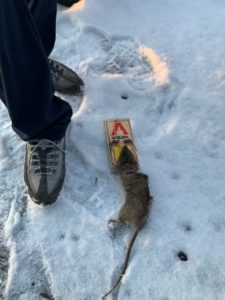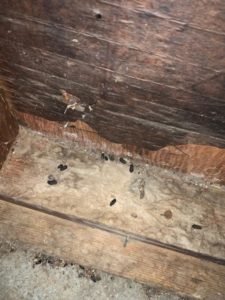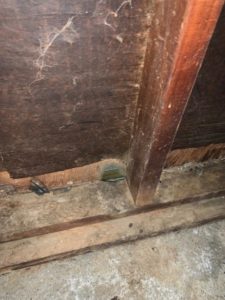What’s that noise, a rat? Why do I have rats? If this sounds like you, you’re not alone. Many people have rats these days and they’re not all living in the inner city. Most of our new rat calls are coming in from the suburbs. Here’s what you need to know.
Why do I have rats? Sorry to say, but if you do it may be your fault. The vast majority of rat calls in the suburbs can be traced directly back to feeding birds as well as having livestock, like chickens. Does this sound familiar? The Norway rat which in Connecticut is your most likely culprit needs all the same things that people do namely food, water and shelter. Of the three, water is the most important as Norway rats require about 1-2 ounces of it per day. This water can be from just about anywhere including toys in the yard filled with water after a storm, a stream or even a koi pond.
Next, on the list is food. Birds, while fun to look at are messy eaters. In fact, much of the food that you put into a feeder is

spilled onto the ground. This makes an ideal food source for a group of hungry rats. As for their home, if they aren’t inside yours yet don’t get comfortable. A Norway rat is a ground dweller and will easily dig burrows in areas where there is ample ground cover created by yard debris or overgrown plantings. If the population get big your home is next, guaranteed.

What if a rat does make it inside? If your unlucky enough to have this happen then you’ll need to know what to look for. Aside from the noise a rat will make rat droppings as well as chewed holes are the most common first signs. The droppings pictured to the left are an example of what Norway rats leave behind. A Norway rat dropping is determined by the size and age of the rat, but is similar to a kidney bean.

Last, you’ll need to see where the rats got in. The most obvious areas are garage doors that don’t go to the ground, gaps in the foundation, plumbing penetrations and broken basement windows. However, did you know rats also have the ability to chew their way into your home? Rat teeth are so durable that they can chew through wood, thin metal and steel wool. Make sure you look everywhere you can for entrance areas. They can be hard to find, but you need to find them all to stop more rats coming from the outside in.
If you have rats and need them gone, call the professionals at Envirocare Pest Control at 1-888-879-6481. We can help.
